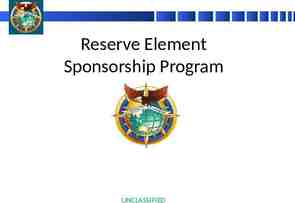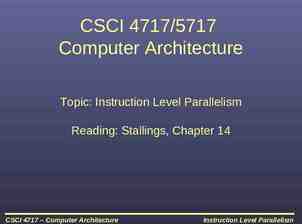Tunxis Community College Tunxis@Bristol presents CTx Spring
11 Slides284.00 KB
Tunxis Community College Tunxis@Bristol presents CTx Spring Conference March 26, 2015 Succeeding as a Supervisor 2015 Life Skills Associates LLC 1
SUPERVISORY ROLES AND RESPONSIBILITIES Partner 2. Strategic leader 3. Advocate 4. Performance manager 5. Coach/counselor/advisor 6. Change and transition leader 7. Organizational liaison 8. Problem solver 9. Decision maker 10. Team leader 11. “Agent of the company” 12. Colleague/co-worker/collaborator 1. 2
INTERPRETING THE MISSION How does the organization’s mission relate to your job? How do you contribute to achieving the organization’s mission? How does the mission relate to employees’ specific jobs? How do they contribute to the organization’s mission? How comfortable are you discussing the mission with employees? How often do you discuss the mission with them? What do you say? How are employees recognized for their contributions to achieving the mission? What can you do in the future to “connect” employee job performance and the organizational mission for each person you supervise? 3
MANAGING EMPLOYEE PERFORMANCE: SETTING CLEAR PERFORMANCE STANDARDS AND EXPECTATIONS Standards Expectations Areas Attendance Specific job responsibilities Work-related behaviors 4
EFFECTIVE STANDARDS AND XPECTATIONS: S.M.A.R.T. Specific Measurable Attainable Results-oriented Time-specific 5
MANAGING EMPLOYEE PERFORMANCE: ASSESSING MOTIVATIONAL NEEDS What part of your job do you like/find satisfying? What part of your job do you dislike/find dissatisfying? Are there parts of your job you want to spend more time on? What are they? Are there parts of your job you want to spend less time on? What are they? Are there any new short-term tasks or responsibilities you’re interested in? What future long-term work and responsibility are you interested in? 6
MANAGING EMPLOYEE PERFORMANCE: EFFECTIVE DELEGATION Specific “contract”: Agree on scope of responsibility; specify results (accountability) and time schedule; provide needed authority, control and feedback; secure both parties' agreement Six Degrees of Delegation: Report all the facts to me; I’ll decide what to do. Let me know alternative actions; include pros and cons of each and recommend one for my approval. Let me know what you intend to do; don’t take action until I endorse it. Let me know what you intend to do; do it unless I say no. Take action; let me know what you did. Take action; no further contact with me is necessary. 7
MANAGING EMPLOYEE PERFORMANCE: POSITIVE FEEDBACK AND RECOGNITION Describe in detail the behavior or performance to be recognized. Explain the impact and value of the behavior or performance on the unit, the organization, and you. Express your appreciation for the employee’s behavior. 8
MANAGING EMPLOYEE PERFORMANCE: CORRECTIVE FEEDBACK 1. 2. 3. 4. 5. 6. 7. 8. 9. Describe the situation and the behavior. State how the behavior affects you or other parties. Pause for response/discussion. Ask what the employee can/will do to change the situation/behavior. Seek/listen to the employee’s response. If appropriate, indicate the consequences. Ask the employee to restate his/her understanding of the situation and necessary changes. Indicate how you will support and follow up. Acknowledge the employee’s agreement/willingness to change and take specific action. 9
EXERCISE: COMMUNICATING CORRECTIVE FEEDBACK Choose an individual whose job performance or behavior you are anticipating you will have to correct, and answer the following questions, then practice communicating the key points of your responses to the individual: What was the specific problematic job performance or workplace behavior you observed or were informed about? What was the impact of the behavior on yourself and others? How do you feel about the behavior? What kind of consequences might the person experience if his or her behavior doesn’t change? What agreements about behavior change would you like to reach ? 10
EMPLOYEE TO EMPLOYEE CONFLICT: EFFECTIVE MEDIATION Bring the parties together. Establish ground rules. Let the parties know that you expect them to resolve the conflict . Ask each party to briefly present his/her perspective. Ask the other party to listen without comment or interruption. Ask the other party to paraphrase what was said and to confirm their understanding. As needed, ask questions to probe for more information and/or deeper meaning. Ask each party to describe the desired end result and the specific actions they would like the other party to take. If more exploration is needed, ask each party to identify what the other party could do more of, less of, stop doing, and/or start doing. Help the parties to identify areas of agreement . Assist the parties in identifying and developing a mutually agreeable resolution and implementation agreement. Follow up with the parties to monitor progress in resolution. 11















